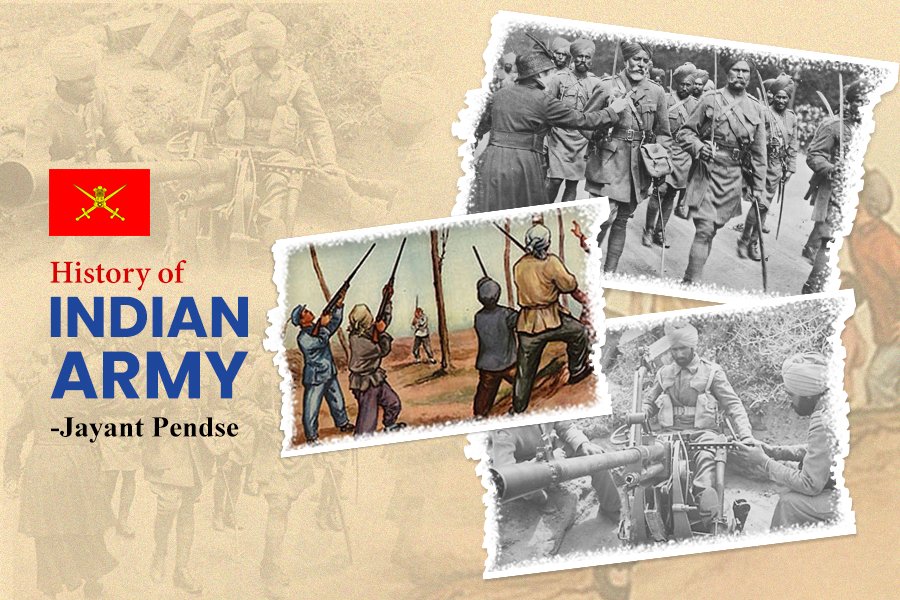

 By Wayam Magazine 15 January 2024
By Wayam Magazine 15 January 2024
Introduction to The Indian Army and its Higher Organisation
The recent ban on old Rs. 500 and Rs. 1000 currency notes has been a hot topic for discussion across all age groups and strata of our society. You would have also read about some 400 Indian Army soldiers including officers having been called in to help two security printing presses in Salboni, West Bengal and Dewas, Madhya Pradesh with printing of new currency notes. This once again goes to prove that our Army is the country's instrument of last resort and is always there when every other organisation fails to deliver.
So why is the Indian Army different from all other instruments of the government? It is because it firmly follows the ethos of "Service Before Self" and its officers live and die by the Motto ingrained into them at the Indian Military Academy-
“The Honour, Safety and Welfare Of Your Country Comes First, Always and Every Time, The Honour, Welfare and Comfort Of The Men You Command Comes Next, Your Own Ease, Comfort and Safety Comes Last, Always and Every Time.”
Before we gain some more insight into The Indian Army as it exists today, let us take a brief look at the history of the Indian Army.
Origins of the Indian Army
The distinguished history of Indian Army dates back more than ten thousand years. The two grand epics of ‘Ramayana’ and ‘Mahabharata’ constitute the fundamental framework around which the edifice of Indian Army is built. The massive war ‘Mahabharata’, fought at Kurukshetra in north-central India, has left indelible imprints on the Indian psyche. The force level in this Epic 18 days war in the quest for peace was nearly 400,000 assorted troops fighting on chariots, horses, elephants and foot soldiers.
However, origins of the modern Indian Army dates back to the early sixteenth century when Europeans, like the French, Dutch, Portuguese and British, settled in India as traders.
In 1640 AD the British East India Company established its first fortified post- Fort Saint George near Madras which soon became its headquarters. Eleven years later, in 1651, they set up another fortified post in Calcutta and named it Fort William. From 1668 the Bombay garrison was established.
The first authentic record of the existence of a regular battalion in Indian soil dates back to the year 1741, when such a unit came into being for carrying out garrison duties in Bombay Castle. In 1757, the first regular Indian infantry battalions were created, each with an establishment of one British captain, two lieutenants, several British sergeants, 42 Indian non commissioned officers and 820 Indian jawans.
During World War-1 (1914-18), around two lakh Indian soldiers participated in the war as a part of the British Army. They fought in all major theatres of war and carved out a name for themselves with their valour and sacrifice. Even in World War- II (1939-45) Indian troops actively participated in the war as a part of the Allied Nations. Over two and a half million Indian soldiers fought under British command against the Axis powers proving their mettle in Europe and North Africa. This also included troops from autonomous Princely States all over India.
The Indian Army Today
When partition of British India took place on 15 August 1947 the old Indian Army stood divided between Pakistan and India. The active strength of the Army along with countrywide movable and immovable assets was shared under a complicated scheme, supervised by a British presence in the form of a Supreme Headquarters.
Indian Army Day is celebrated with pomp and show every year on the 15th of January in the National Capital, Delhi in the form of an Army parade and other Military shows. This was the day when Lt. General KM Cariappa took over as the first Commander in Chief of Indian Army in the year 1948. The day is marked as a day to salute the Brave soldiers who laid down their lives for the protection of the Country.
Role of the Indian Army
The Indian Army is mandated to safeguard National Interests from External Aggression and Internal Subversion.
Tasks Assigned to the Indian Army
The following tasks have been assigned to the Indian Army:
1. War Fighting to meet External Aggression.
2. Internal Security Management to include Internal Threats.
3. Force Projection.
4. Peace Keeping Operations or Military Assistance to friendly foreign countries.
5. Render Humanitarian Assistance, Disaster Relief and Aid to Civil Authorities.
-Jayant Pendse
***